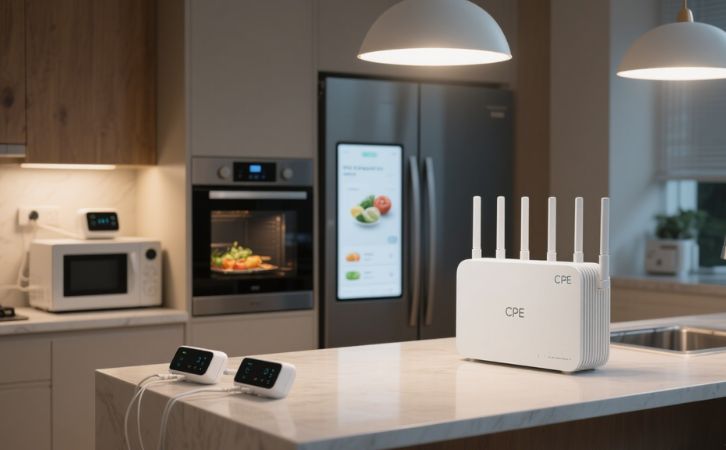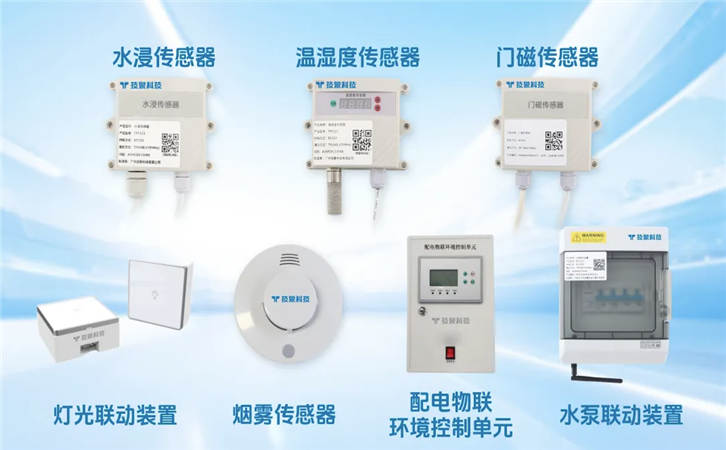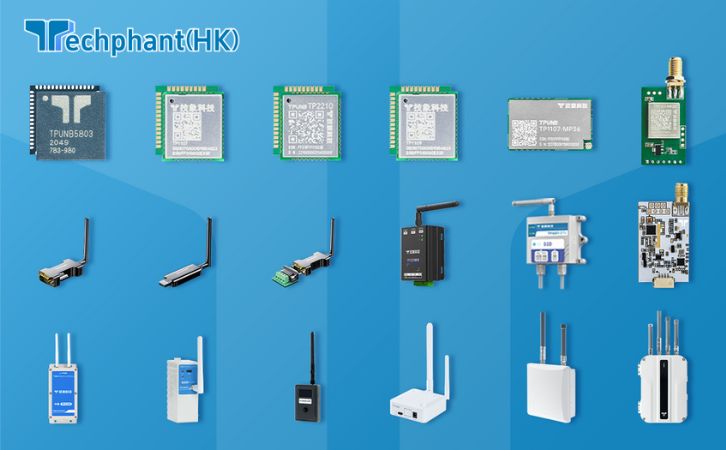The rise of the Internet of Things (IoT) has driven the need for energy-efficient solutions, particularly in low-power IoT networks where devices like sensors and actuators often rely on battery power with lifespans of years. Customer Premises Equipment (CPE), such as gateways and routers, plays a pivotal role as the central hub connecting these devices to broader networks like LoRaWAN or NB-IoT. Designing energy-efficient CPE is critical to minimize power consumption while maintaining reliable connectivity and performance in applications like smart agriculture, environmental monitoring, and smart cities. This article examines the principles, technologies, applications, and challenges of energy-efficient CPE design for low-power IoT networks, highlighting its importance in sustainable IoT ecosystems.
I. Principles of Energy-Efficient CPE Design
Energy-efficient CPE design focuses on minimizing power consumption while supporting the connectivity needs of low-power IoT devices. A key principle is the use of low-power hardware, such as system-on-chip (SoC) platforms like the Nordic nRF52 or Espressif ESP32, which integrate multi-protocol radios (e.g., Zigbee, LoRa) and low-power microcontrollers. These chips operate in ultra-low-power modes, consuming microamperes in sleep states and waking only for data transmission or processing tasks. For example, a CPE might enter a deep sleep mode, consuming less than 10 µA, and wake periodically to poll connected sensors.
Another principle is efficient radio management. CPE devices support protocols like LoRaWAN, which uses chirp spread spectrum modulation to achieve long-range communication (up to 15 km) with minimal power, or NB-IoT, which leverages power-saving modes like PSM (Power Saving Mode) and eDRX (extended Discontinuous Reception). Adaptive power control adjusts transmission power based on signal strength, reducing energy waste. Software optimization, such as lightweight protocol stacks (e.g., MQTT-SN for constrained networks), minimizes processing overhead. Additionally, energy-efficient CPE often incorporates energy harvesting techniques, like solar or kinetic energy, to supplement or replace battery power in remote deployments.
II. Key Technologies Enabling Energy Efficiency
Several technologies underpin energy-efficient CPE design for low-power IoT networks. Multi-radio chipsets are critical, enabling CPE to support protocols like LoRaWAN, NB-IoT, Zigbee, and Bluetooth Low Energy (BLE) within a single device. For instance, a CPE might use LoRaWAN to connect remote agricultural sensors and Wi-Fi to relay data to the cloud, with dynamic radio switching to minimize power use. Low-power wide-area network (LPWAN) protocols are particularly suited for energy efficiency; LoRaWAN’s low data rates (0.3–50 kbps) and long range reduce the need for frequent transmissions, while NB-IoT’s PSM allows devices to remain dormant for hours, consuming less than 5 µA.
Edge computing is another key technology, allowing CPE to process data locally and reduce cloud-bound traffic. For example, a CPE in a smart agriculture system might aggregate and filter sensor data before transmission, cutting energy use by up to 50% compared to constant cloud communication. Power management units (PMUs) optimize voltage and current delivery to components, while duty-cycling techniques ensure radios and processors are active only when needed. Security features, such as lightweight encryption (e.g., AES-128 for LoRaWAN), are optimized to minimize computational overhead, ensuring energy efficiency without compromising data protection.
III. Applications in Low-Power IoT Networks
Energy-efficient CPE is transforming low-power IoT applications by enabling long-term, sustainable deployments. In smart agriculture, CPE acts as a gateway connecting LoRaWAN-based soil moisture sensors to cloud platforms for precision irrigation. For example, a solar-powered CPE in a vineyard might collect data from hundreds of sensors across hectares, operating for years without maintenance due to its low power consumption (e.g., 10 mW in active mode). Environmental monitoring benefits similarly, with CPE relaying data from air quality or water level sensors in remote areas, using NB-IoT for reliable cellular connectivity and energy harvesting to eliminate battery replacements.
In smart cities, energy-efficient CPE supports applications like waste management, where gateways connect NB-IoT-enabled bin sensors to report fill levels, optimizing collection routes. A single CPE can manage thousands of devices using mMTC (Massive Machine-Type Communications), with power-saving protocols ensuring minimal energy use. Asset tracking is another application, with CPE enabling low-power tracking of goods in logistics via Sigfox or LoRaWAN, where devices transmit small packets (e.g., 12 bytes) for location updates. These applications highlight CPE’s ability to support scalable, battery-efficient IoT networks in resource-constrained environments.
IV. Challenges in Energy-Efficient CPE Design
Designing energy-efficient CPE for low-power IoT networks presents several challenges. Balancing performance and power consumption is a primary concern; supporting multiple protocols (e.g., LoRaWAN, Wi-Fi) requires complex hardware, increasing energy demands. For instance, a multi-radio CPE might consume 100 mW when active, compared to 10 mW for a single-protocol device. Interoperability is another issue, as IoT devices often use proprietary protocols, requiring CPE to handle protocol translation, which can increase processing power and energy use.
Security poses a significant challenge, as implementing robust encryption (e.g., DTLS for CoAP) on low-power hardware increases computational overhead, potentially shortening battery life. For example, a CPE running TLS for MQTT may consume 20% more power than unencrypted communication. Scalability also complicates design; managing thousands of devices requires efficient data routing and aggregation, which can strain low-power processors. Environmental factors, such as temperature extremes in outdoor deployments, affect battery performance and require ruggedized, energy-efficient designs. Finally, cost constraints limit the adoption of advanced low-power chipsets or energy harvesting, particularly in developing regions or budget-sensitive applications.
Conclusion
Energy-efficient CPE design is a cornerstone of low-power IoT networks, enabling sustainable connectivity for applications like smart agriculture, environmental monitoring, and smart cities. By leveraging low-power hardware, LPWAN protocols, edge computing, and energy harvesting, CPE minimizes energy consumption while supporting diverse IoT ecosystems. Applications demonstrate its transformative potential, allowing devices to operate for years without maintenance in remote or resource-constrained settings. However, challenges like performance-power trade-offs, security overhead, and interoperability require ongoing innovation in hardware, software, and protocol design. As technologies like 6G, AI-driven power optimization, and advanced energy harvesting mature, energy-efficient CPE will continue to drive the scalability and sustainability of low-power IoT networks, shaping the future of connected ecosystems.



